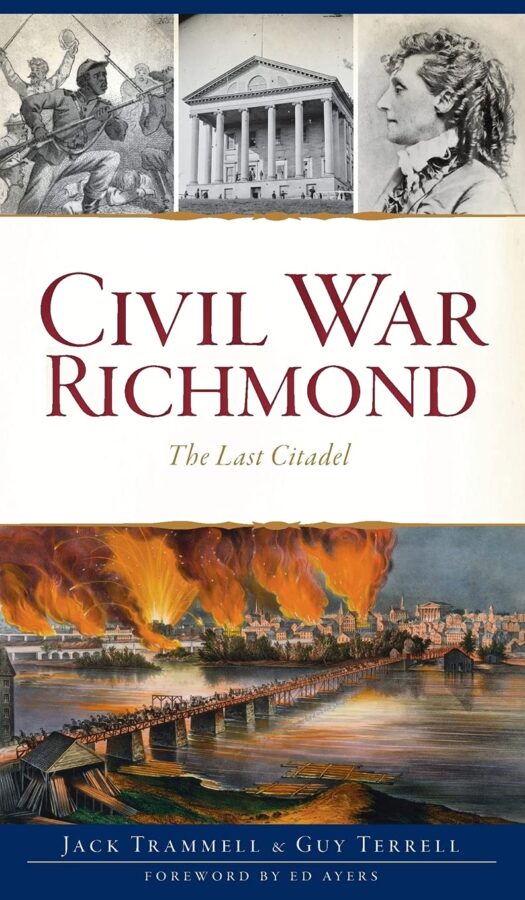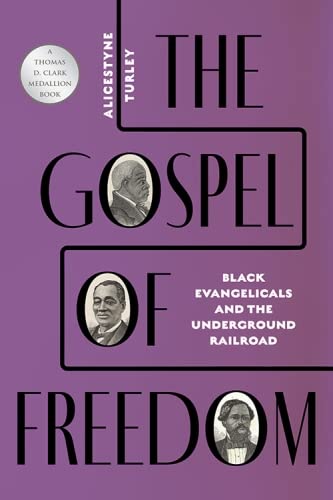Civil War Richmond: The Last Citadel by Jack Trammell and Guy Terrell. The History Press, 2021. Paper, ISBN: 978-1467145893. $21.99.
 In the vast realm of Civil War studies, few individual cities have received the attention paid Richmond, Virginia. Scores of books—ranging from the memoirs of its contemporary residents to modern narratives by the likes of Stephen Ash, Ernest B. Furgurson, and Mary DeCredico—document the experience of war in the second capital of the Confederacy.
In the vast realm of Civil War studies, few individual cities have received the attention paid Richmond, Virginia. Scores of books—ranging from the memoirs of its contemporary residents to modern narratives by the likes of Stephen Ash, Ernest B. Furgurson, and Mary DeCredico—document the experience of war in the second capital of the Confederacy.
Civil War Richmond: The Last Citadel is the latest in a recent spate of monographs, essay collections, and guidebooks pertaining to the city. Authors Jack Trammell and Guy Terrell, both local Richmond historians, have produced a sharp, well-written, and concise social history of the four years that helped to define Virginia’s capital city. “The Civil War is just one of its chapters,” the writers concede, “but it was the darkest and overlays much of the city’s history since 1865.”
Trammell and Terrell open with an overview of early Richmond, including indigenous settlements, the Revolutionary War, and influential antebellum events. Richmond was a cosmopolitan city along the James River, boasting industry, access to an international port, opportunities for commerce, and a plethora of entertainment options. Simultaneously, it was home to “gambling, prostitution, illegal bars and ruffian behavior,” the authors note.
By the dawn of the Civil War, the natural beauty of Richmond’s surrounding rivers and hills veiled the dark realities of the slave marts operating throughout its streets, as well as laws that circumscribed the lives of free African Americans. Trammell and Terrell contend that Richmond’s reliance upon race-based slavery was representative of the social situation throughout the Civil War-era South, but this rendered the institution’s realities for Black Richmonders no less horrific. Importantly, the authors also address the abolitionists, Quakers, and Unionist sympathizers who endeavored to aid African Americans throughout the city, battling white supremacy on a common front and aiding formerly enslaved freedom seekers on their paths to liberty.
With the transfer of the Confederate capital to Richmond in 1861, an influx of bureaucrats and elected officials ensured that the city would become the tenth-largest on the North American continent. Having already been the seat of the Virginia state government (as well as an industrial region and a logistical hub for railroads, canals, and several modernized highways), Richmond’s population swelled to more than 100,000 people during the Civil War. The conflict repurposed the city’s resources, the authors maintain, causing “tobacco warehouses to become prisons” and giving rise to Richmond’s first ten-story “skyscrapers.”
With Richmond’s growth came a period of instability and hardship. Tramell and Terrell offer an analysis of the challenges involved in turning the city’s infrastructure into the seat of a fledgling separatist government, as foodstuffs and supplies were in short supply as the conflict wore on. Such circumstances created “inflation and deprivation,” the authors write, for “wartime profiteering made fortunes for some, while widows and wounded soldiers struggled to find the basic necessities.” For instance, the price of a keg of nails rose from $4.50 to $175 by the end of 1864, evidencing how, “over time, the economy began to deteriorate, and the population increasingly suffered.”
Here, Richmond is painted as a city that had the potential to be the longstanding seat of a new nation, but ultimately lost everything. The “steady anxiety” of combatting militaries maneuvering around the city’s environs, coupled with massive amounts of death brought into its structures through hospitals and prisons, bred “a more dangerous city to live in during the war,” the authors contend. Petty crimes, gang activity, prostitution, and rape, along with “suicide, alcoholism and other social problems” were “tiring for the population,” and combined to ensure that a once-hopeful city would be destitute by war’s end.
Thanks to the Civil War, “the very fabric of Richmond had begun to fray,” Trammell and Terrell write. “Besides the physical aspects of the city, its spirit was frayed and tattered,” leading to its eventual fall and surrender. Since then, it has become one among many centers to study the Confederacy and its contested place in American memory.
Brief studies of religious activity, martial affairs, military prisons, soldiers’ hospitals, and local press abound in this crisp narrative. Lists containing the locations of key landmarks (along with dozens of high-quality photographs, and a series of original maps, graphs, and charts) provide for the possibility of using this book as a guide to carry along while touring Richmond.
“Few cities have the historical stretch and girth of Richmond,” the authors conclude, making the city “an anomaly” and “crown jewel.” Blending social, military, and political history, Jack Trammell and Guy Terrell have produced an anomaly and crown jewel among book-length studies of the Confederate capital.
Codie Eash is the Director of Education and Museum Operations at Seminary Ridge Museum and Education Center in Gettysburg, Pennsylvania. He is a regular contributor to PennCivilWar.com.
